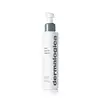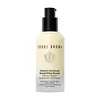What's inside
What's inside
 Key Ingredients
Key Ingredients

 Benefits
Benefits

 Concerns
Concerns

 Ingredients Side-by-side
Ingredients Side-by-side

Water
Skin ConditioningCocamidopropyl Hydroxysultaine
CleansingGlycolic Acid
BufferingGlycerin
HumectantPEG-6 Cocamide
EmulsifyingPolyacrylate Crosspolymer-6
Emulsion StabilisingDisodium Cocoyl Glutamate
CleansingHydroxyacetophenone
AntioxidantSuccinoglycan
Skin ConditioningSimmondsia Chinensis Seed Oil
EmollientCalendula Officinalis Flower Extract
MaskingCitrus Aurantium Dulcis Peel Oil
MaskingCitrus Paradisi Peel Oil
MaskingLeuconostoc/Radish Root Ferment Filtrate
AntimicrobialUrea
BufferingAllantoin
Skin ConditioningPolyquaternium-51
Skin ConditioningTrehalose
HumectantCaprylyl Glycol
EmollientSodium Hyaluronate
HumectantTocopherol
AntioxidantHydrogenated Palm Glycerides Citrate
EmollientGlyceryl Oleate
EmollientCoconut Acid
Cleansing1,2-Hexanediol
Skin ConditioningT-Butyl Alcohol
PerfumingCoco-Glucoside
CleansingSodium PCA
HumectantSodium Chloride
MaskingSodium Hydroxide
BufferingCitric Acid
BufferingPotassium Sorbate
PreservativeSodium Benzoate
MaskingLimonene
PerfumingWater, Cocamidopropyl Hydroxysultaine, Glycolic Acid, Glycerin, PEG-6 Cocamide, Polyacrylate Crosspolymer-6, Disodium Cocoyl Glutamate, Hydroxyacetophenone, Succinoglycan, Simmondsia Chinensis Seed Oil, Calendula Officinalis Flower Extract, Citrus Aurantium Dulcis Peel Oil, Citrus Paradisi Peel Oil, Leuconostoc/Radish Root Ferment Filtrate, Urea, Allantoin, Polyquaternium-51, Trehalose, Caprylyl Glycol, Sodium Hyaluronate, Tocopherol, Hydrogenated Palm Glycerides Citrate, Glyceryl Oleate, Coconut Acid, 1,2-Hexanediol, T-Butyl Alcohol, Coco-Glucoside, Sodium PCA, Sodium Chloride, Sodium Hydroxide, Citric Acid, Potassium Sorbate, Sodium Benzoate, Limonene
Water
Skin ConditioningOlea Europaea Fruit Oil
MaskingButylene Glycol
HumectantMethyl Gluceth-20
HumectantButyrospermum Parkii Butter
Skin ConditioningBis-PEG-18 Methyl Ether Dimethyl Silane
EmollientAscorbyl Glucoside
AntioxidantPotassium Cetyl Phosphate
EmulsifyingTocopheryl Acetate
AntioxidantNiacinamide
SmoothingPyrus Malus Fruit Extract
Skin ConditioningLens Esculenta Fruit Extract
Skin ConditioningCitrullus Lanatus Fruit Extract
Skin ConditioningPassiflora Edulis Seed Oil
EmollientGlycereth-26
HumectantAcetyl Glucosamine
Skin ConditioningLactobacillus Ferment
Skin ConditioningGlycerin
HumectantHydrogenated Palm Glycerides
EmollientHydrogenated Polydecene
EmollientSigesbeckia Orientalis Extract
Skin ConditioningCaprylyl Glycol
EmollientCaffeine
Skin ConditioningCholesterol
EmollientEthylhexylglycerin
Skin ConditioningSodium Hyaluronate
HumectantLactis Proteinum
Skin ConditioningCitrus Grandis Peel Oil
MaskingPelargonium Graveolens Flower Oil
MaskingGlycyrrhiza Glabra Root Extract
BleachingSodium Lactate
Buffering7-Dehydrocholesterol
Emulsion StabilisingZea Mays Oil
EmulsifyingSodium PCA
HumectantLaminaria Digitata Extract
Skin ProtectingBeta-Carotene
Skin ConditioningSerine
MaskingGlutamic Acid
HumectantCereus Grandiflorus Flower Extract
Skin ConditioningAcetyl Hexapeptide-8
HumectantAspartic Acid
MaskingLeucine
Skin ConditioningAlanine
MaskingLysine
Skin ConditioningArginine
MaskingTyrosine
MaskingPhenylalanine
MaskingThreonine
Valine
MaskingProline
Skin ConditioningIsoleucine
Skin ConditioningHistidine
HumectantMagnesium Ascorbyl Phosphate
AntioxidantPolyacrylate Crosspolymer-6
Emulsion StabilisingPolysorbate 20
EmulsifyingPEG-8
HumectantSodium Hydroxide
BufferingPPG-5-Ceteth-20
EmulsifyingJojoba Wax PEG-120 Esters
Acrylates/C10-30 Alkyl Acrylate Crosspolymer
Emulsion StabilisingCitric Acid
BufferingPanthenol
Skin ConditioningT-Butyl Alcohol
PerfumingSodium Benzoate
MaskingGlycine
BufferingLimonene
PerfumingCitronellol
PerfumingGeraniol
PerfumingLinalool
PerfumingCitral
PerfumingSodium Citrate
BufferingDisodium EDTA
BHT
AntioxidantEthylbisiminomethylguaiacol Manganese Chloride
AntioxidantPotassium Sorbate
PreservativePhenoxyethanol
PreservativeWater, Olea Europaea Fruit Oil, Butylene Glycol, Methyl Gluceth-20, Butyrospermum Parkii Butter, Bis-PEG-18 Methyl Ether Dimethyl Silane, Ascorbyl Glucoside, Potassium Cetyl Phosphate, Tocopheryl Acetate, Niacinamide, Pyrus Malus Fruit Extract, Lens Esculenta Fruit Extract, Citrullus Lanatus Fruit Extract, Passiflora Edulis Seed Oil, Glycereth-26, Acetyl Glucosamine, Lactobacillus Ferment, Glycerin, Hydrogenated Palm Glycerides, Hydrogenated Polydecene, Sigesbeckia Orientalis Extract, Caprylyl Glycol, Caffeine, Cholesterol, Ethylhexylglycerin, Sodium Hyaluronate, Lactis Proteinum, Citrus Grandis Peel Oil, Pelargonium Graveolens Flower Oil, Glycyrrhiza Glabra Root Extract, Sodium Lactate, 7-Dehydrocholesterol, Zea Mays Oil, Sodium PCA, Laminaria Digitata Extract, Beta-Carotene, Serine, Glutamic Acid, Cereus Grandiflorus Flower Extract, Acetyl Hexapeptide-8, Aspartic Acid, Leucine, Alanine, Lysine, Arginine, Tyrosine, Phenylalanine, Threonine, Valine, Proline, Isoleucine, Histidine, Magnesium Ascorbyl Phosphate, Polyacrylate Crosspolymer-6, Polysorbate 20, PEG-8, Sodium Hydroxide, PPG-5-Ceteth-20, Jojoba Wax PEG-120 Esters, Acrylates/C10-30 Alkyl Acrylate Crosspolymer, Citric Acid, Panthenol, T-Butyl Alcohol, Sodium Benzoate, Glycine, Limonene, Citronellol, Geraniol, Linalool, Citral, Sodium Citrate, Disodium EDTA, BHT, Ethylbisiminomethylguaiacol Manganese Chloride, Potassium Sorbate, Phenoxyethanol
 Reviews
Reviews

Ingredients Explained
These ingredients are found in both products.
Ingredients higher up in an ingredient list are typically present in a larger amount.
Caprylyl Glycol is a humectant and emollient, meaning it attracts and preserves moisture.
It is a common ingredient in many products, especially those designed to hydrate skin. The primary benefits are retaining moisture, skin softening, and promoting a healthy skin barrier.
Though Caprylyl Glycol is an alcohol derived from fatty acids, it is not the kind that can dry out skin.
This ingredient is also used as a preservative to extend the life of products. It has slight antimicrobial properties.
Learn more about Caprylyl GlycolCitric Acid is an alpha hydroxy acid (AHA) naturally found in citrus fruits like oranges, lemons, and limes.
Like other AHAs, citric acid can exfoliate skin by breaking down the bonds that hold dead skin cells together. This helps reveal smoother and brighter skin underneath.
However, this exfoliating effect only happens at high concentrations (20%) which can be hard to find in cosmetic products.
Due to this, citric acid is usually included in small amounts as a pH adjuster. This helps keep products slightly more acidic and compatible with skin's natural pH.
In skincare formulas, citric acid can:
While it can provide some skin benefits, research shows lactic acid and glycolic acid are generally more effective and less irritating exfoliants.
Most citric acid used in skincare today is made by fermenting sugars (usually from molasses). This synthetic version is identical to the natural citrus form but easier to stabilize and use in formulations.
Read more about some other popular AHA's here:
Learn more about Citric AcidGlycerin is already naturally found in your skin. It helps moisturize and protect your skin.
A study from 2016 found glycerin to be more effective as a humectant than AHAs and hyaluronic acid.
As a humectant, it helps the skin stay hydrated by pulling moisture to your skin. The low molecular weight of glycerin allows it to pull moisture into the deeper layers of your skin.
Hydrated skin improves your skin barrier; Your skin barrier helps protect against irritants and bacteria.
Glycerin has also been found to have antimicrobial and antiviral properties. Due to these properties, glycerin is often used in wound and burn treatments.
In cosmetics, glycerin is usually derived from plants such as soybean or palm. However, it can also be sourced from animals, such as tallow or animal fat.
This ingredient is organic, colorless, odorless, and non-toxic.
Glycerin is the name for this ingredient in American English. British English uses Glycerol/Glycerine.
Learn more about GlycerinLimonene is a fragrance that adds scent and taste to a formulation.
It's found in the peel oil of citrus fruits and other plants such as lavender and eucalyptus. The scent of limonene is generally described as "sweet citrus".
Limonene acts as an antioxidant, meaning it helps neutralize free radicals.
When exposed to air, oxidized limonene may sensitize the skin. Because of this, limonene is often avoided by people with sensitive skin.
The term 'fragrance' is not regulated in many countries. In many cases, it is up to the brand to define this term. For instance, many brands choose to label themselves as "fragrance-free" because they are not using synthetic fragrances. However, their products may still contain ingredients such as essential oils that are considered a fragrance.
Learn more about LimonenePolyacrylate Crosspolymer-6 is a texture enhancer and pH adjuster.
It is be used to thicken water-based products and create a gel-texture with a velvet feel.
One manufacturer claims this ingredient to have a pH range of 2-8 and to be biodegradable.
Learn more about Polyacrylate Crosspolymer-6Potassium Sorbate is a preservative used to prevent yeast and mold in products. It is commonly found in both cosmetic and food products.
This ingredient comes from potassium salt derived from sorbic acid. Sorbic acid is a natural antibiotic and effective against fungus.
Both potassium sorbate and sorbic acid can be found in baked goods, cheeses, dried meats, dried fruit, ice cream, pickles, wine, yogurt, and more.
You'll often find this ingredient used with other preservatives.
Learn more about Potassium SorbateSodium Benzoate is a preservative. It's used in both cosmetic and food products to inhibit the growth of mold and bacteria. It is typically produced synthetically.
Both the US FDA and EU Health Committee have approved the use of sodium benzoate. In the US, levels of 0.1% (of the total product) are allowed.
Sodium benzoate works as a preservative by inhibiting the growth of bacteria inside of cells. It prevents the cell from fermenting a type of sugar using an enzyme called phosphofructokinase.
It is the salt of benzoic acid. Foods containing sodium benzoate include soda, salad dressings, condiments, fruit juices, wines, and snack foods.
Studies for using ascorbic acid and sodium benzoate in cosmetics are lacking, especially in skincare routines with multiple steps.
We always recommend speaking with a professional, such as a dermatologist, if you have any concerns.
Learn more about Sodium BenzoateSodium Hyaluronate is hyaluronic acid's salt form. It is commonly derived from the sodium salt of hyaluronic acid.
Like hyaluronic acid, it is great at holding water and acts as a humectant. This makes it a great skin hydrating ingredient.
Sodium Hyaluronate is naturally occurring in our bodies and is mostly found in eye fluid and joints.
These are some other common types of Hyaluronic Acid:
Learn more about Sodium HyaluronateSodium Hydroxide is also known as lye or caustic soda. It is used to adjust the pH of products; many ingredients require a specific pH to be effective.
In small amounts, sodium hydroxide is considered safe to use. However, large amounts may cause chemical burns due to its high alkaline.
Your skin has a natural pH and acid mantle. This acid mantle helps prevent harmful bacteria from breaking through. The acid mantle also helps keep your skin hydrated.
"Alkaline" refers to a high pH level. A low pH level would be considered acidic.
Learn more about Sodium HydroxideSodium PCA is the sodium salt of pyroglutamic acid. It is naturally occurring in our skin's natural moisturizing factors where it works to maintain hydration.
The PCA stands for pyrrolidone carboxylic acid, a natural amino acid derivative.
This ingredient has skin conditioning, anti-inflammatory, and humectant properties. Humectants help hydrate your skin by drawing moisture from the air. This helps keep your skin moisturized.
Learn more about Sodium PCAT-Butyl Alcohol it is most commonly used as a solvent.
At room temperature, T-Butyl Alcohol melts and has a similar smell to camphor.
This ingredient is derived from isobutane. It is the simplest form of a tertiary alcohol. Due to its chemical structure, it is more resistant to oxidation.
Some sources online claim T-Butyl Alcohol is a fatty alcohol. However, it is not considered one due to its chemical structure.
Learn more about T-Butyl AlcoholWater. It's the most common cosmetic ingredient of all. You'll usually see it at the top of ingredient lists, meaning that it makes up the largest part of the product.
So why is it so popular? Water most often acts as a solvent - this means that it helps dissolve other ingredients into the formulation.
You'll also recognize water as that liquid we all need to stay alive. If you see this, drink a glass of water. Stay hydrated!
Learn more about Water